The city of Alexandria in Egypt, in the year 285. A man, then aged thirty four, turns his back on his estate, his possessions, and all that his life has been up to that moment, and walks away into the unforgiving desert dunes. What drives him into the hot North African winds, into this landscape of dust and nothingness, is his longing for an experience of the divine, of something that would infuse his life with a transcendent other. It was then not unknown for those who sought such mystic encounters to retreat to the less-frequented outskirts of the city. What was different about Anthony is that he went farther. In the inhospitably barren wilderness of the Egyptian desert, far from the city, Anthony settled down to a life of total seclusion that would last for thirteen years.
Other locations as remote, and other unrelentingly reclusive periods would follow, as Anthony's pious reputation spread widely enough for his life to be chronicled, and for his name to become a title. He was now Anthony of the Desert. The chronicles recounted his privations and his visions, and interpreted these in the context of his Christian struggles with his adversary the Devil. It is these accounts which have provided a rich theme for artists. But when we look at these works, what appeals to the artists would seem to have less to do with Anthony's fervent piety than with the visions with which the Devil chose to tempt him.
Piety, it seems, is not only a more difficult quality to portray convincingly, but less appealing for artists than the parade of phantasms which the Devil supplied to the hermit, either in the form of voluptuous temptresses or bizarre and terrifying monstrosities: all of them fertile ground for the creative imagination of artists from Hieronymus Bosch to today's intricate sculptural constructions by Kris Kuksi (above).
Henri Fantin-Latour's 19th century temptresses drift towards the studying Anthony out of nebulous wreaths of vapour (above). But Alexandre Louis Leloir and Domenico Morelli (below) supply the saint with altogether more substantial female company. Leloir's Anthony grips desperately - and rather melodramatically - onto his crucifix as two apparently all-too-real temptresses seek to embrace him, while Morelli's Anthony strives not to notice as his own two female illusions emerge insidiously from underneath the reed matting of his hermit's cave as three more disembodied females lurk in the shadows.
John Charles Dollman has a kneeling and inexplicably clean-shaven Anthony studiously ignoring both a single alluring female and a whole menagerie of desert animals - wolves, foxes and apes - circled around the entrance to his firelit retreat (below). Mere illusions ought not to cast shadows, but the shadows cast by Dollman's phantoms give them a telling reality. The impassive saint seems calmly unaware of these presences, making them more curiously real to us, the artist's audience, who have not endured Anthony's privation-induced visions.
Intriguingly, Dollman returned to the same subject twenty eight years later, and the differences with his first canvas are striking, with the colours being quieter, more muted (below). Although fewer in number, the animals are much the same, but it is the woman who has undergone the greatest transformation. Now substantial enough, not merely to cast a shadow, but to leave her footprints in the desert sand behind her, her modest pose conveys not so much wantonness, but humility. Silently she stands with her hands clasped behind her back, seeming almost to offer herself in companionship to the kneeling hermit. We feel that, once he turns to become aware of her presence, his gesture will be one, not of tortured horror, but of calm acceptance, a surrender to the seeming reality of this comforting presence which has come to him in the moonlit desert silence.
Perhaps in the intervening years Dollman had reached a deeper understanding of the nature of illusions, coming at last to a realisation that our own awareness, while it might not shatter such illusions, at least reaches a measure of acceptance. And in that acceptance the illusions are themselves transformed into something less threatening, more consolling, in the midst of hostile realities.
Hawkwood
This post is complementary to my current post about Anthony of the Desert on my other blog, which investigates Anthony's life. You are welcome to visit and read my post here:
Anthony of the Desert: Life as Fiction.
My own portrayal of Anthony can be seen at: Anthony of the Desert.
Anthony of the Desert: Life as Fiction.
My own portrayal of Anthony can be seen at: Anthony of the Desert.




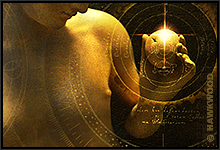




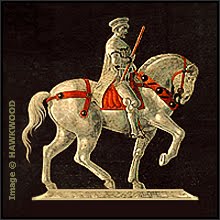
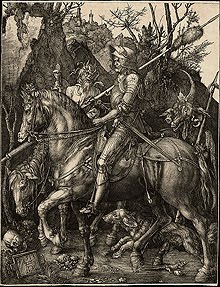











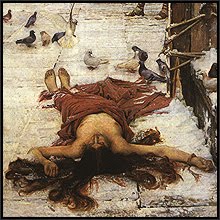

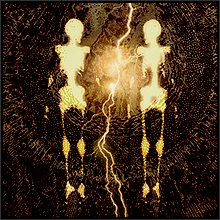
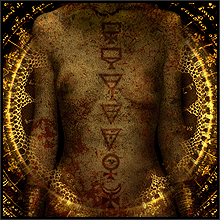
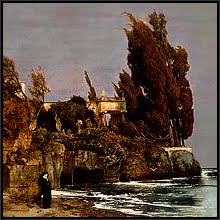

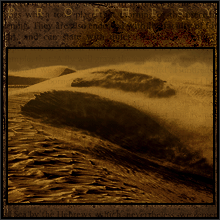

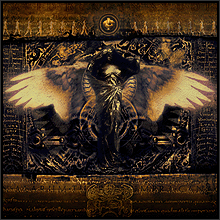

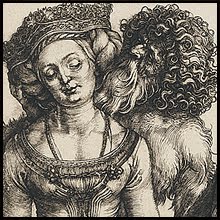









No comments:
Post a Comment
You are welcome to share your thoughts..